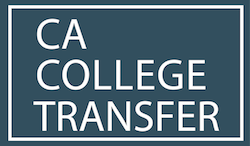How Long Did Admissions Spend Looking at Your UC Application?
You struggled over your UC application. How long did it take admissions to read it?
This is a question I try to impress upon all my clients who apply to the UCs. There are simply not enough hours in the day for UC admissions officers to pore over applications line by line and savor each delectable moment. The process, in some instances, takes a matter of a few minutes.
This assumption was further verified in a recent article in the Wall Street Journal that noted applications to some elite colleges may be viewed in as little as eight minutes.
Staffers from more schools—including the Georgia Institute of Technology, Rice University and Bucknell University in Pennsylvania—now divvy up individual applications. One person might review transcripts, test scores and counselor recommendations, while the other handles extracurricular activities and essays…
Admissions officers estimate that upward of 30 elite schools have embraced the method, championed early by the University of Pennsylvania. Colorado College, Case Western Reserve University, Swarthmore College and the California Institute of Technology.
By necessity the UC application process has to be partially automated
Consider this: Over 221,000 students applied to the University of California for fall 2018. Of those, 34,347 were transfers. And these are just the students who applied — it is not taking into account that the same one student probably applied to several campuses. In fact, five of the UCs each received over 100,000 applications. And these numbers are rising annually.
In 2013 there was the famous New York Times article on the admissions process for UC Berkeley written by a reader who was hired to rank application essays. One of the big takeaways from the piece was what I and many suspected for some time: the UCs divvy up the application process into various components and assign people to review certain areas. In fact, we know essays are still farmed out because the UC campuses regularly post job listings for application essay readers.
So how does the UC application process work?
My guess is it works something like this: A general overseer handles a subset of applications, either by region or covering select major categories. Under this umbrella handler, people (maybe one, maybe more) are assigned key areas — checking transcripts and extra-curricular activities, reading essays, etc. In the end, of course, the application is viewed in its entirety by the overseer and likely a small committee. But the point is the final decision is often based on the scores given by the sub-players.
A clue hidden in plain sight
There is one clue that can be used to help determine how it unfolds, and that’s by looking at how the UC Alumni Associations handle their alumni scholarship essays. The alumni offices solicit volunteer readers from previous campus graduates. Readers are assigned essays and are asked to rank each one by assigning a score to specific areas, with 5 usually being excellent; 4 very good; 3 average; 2 weak; and 1 very weak. Each reader is given extensive training as to what to look for in each area assessed.
Based on the scoring paradigm for alumni scholarship essays, below is a guesstimate on how a Personal Insights prompt might be scored and adapted:
Personal Insight Essay Scoring
- Did the applicant clearly state the circumstance related to the prompt? (score 1-5)
- Did the applicant expand on the circumstance? (score 1-5)
- Did the applicant show action or strong commitment? (score 1-5)
- Did the applicant show growth or critical reflection? (score 1-5)
At least two people read the alumni scholarship essays and the scores will usually more or less match, assuming they’re working off the same training criteria. Thus, the results might look like this:
READER 1 READER 2
3 4
4 4
4 5
5 5
In the above example, we can see the readers pretty much agree on the impact of the Personal Insight essay. Easy peasy. These scores are entered into the application and go to the overseer and committee that will make the final decision. If it’s a 4.0 GPA candidate with some strong ECs and and scores of 4-5 on the essays, who can really say to what extent the final reviewers will even read the essays when making a determination? It probably follows a case-by-case basis or a general look-see. If the readers have been employed for a while and they trust their judgment, that might be the end of the story. Admitted.
The UCs are fairly secretive about the process so we simply don’t know, but based on the hundreds of thousands of applications they need to plow through, and based on my own past experience with public school foundations, my assumption is that with the enormous time constraints, a scoring system solves a lot of problems.
While we’re on this topic, you might ask, well what happens if two readers give wildly divergent scores. In the case of the alumni office, other readers will be asked to come in and assess the essays. Undoubtedly this is also in place with general applications.
A word about the UCLA TAP Program
If you apply to UCLA’s Transfer Alliance Program, which is an honors-based program offered at participating California community colleges, one of the perks is you are afforded an additional read-through of your application. So who is reading this exactly? I assume it is the TAP office who is giving you the extra eyeballing. TAP offers priority consideration to UCLA applicants and by their estimates, 80% of TAP enrollees are accepted to UCLA, so that would be the likely answer.
Which applications get the lengthiest reviews?
Ironically, it isn’t the top players that usually garner the most time-intensive reviews. It is, in fact, those on the fence, the borderline applicants. Despite the built-in necessity for speed when analyzing hundreds of thousands of UC applications, the admissions officers take their jobs seriously and those who are not clearly in the reject pile or in the admit pile are the ones the UCs will focus on.
Steps to take in the application
So the takeaway from the above scenario, which posits that applications are read quickly, is that there are steps applicants can take to better their chances of a positive score, no matter where they fall on the spectrum of desirability,
–> Additional Comments rather than Personal Insight
One thing you want to ensure is that key parts of your story are readily apparent to everyone reading your application. This prevents items from potentially falling through the cracks. So, if you had a hardship or setback that you feel is crucial to understanding your trajectory, I suggest not making it a Personal Insight essay but rather adding it to one of the two Additional Comments sections: (1) the additional comments after the academic section, or (2) the final additional comments where you can add anything not already known.
The reason for this? Not every UC reads the Personal Insights for transfers so your great essay might not even be seen. Yes, it’s true: Berkeley, UCLA, San Diego, Merced and Davis are the only UCs that read the transfer Personal Insights. Santa Barbara, Irvine and Santa Cruz do not. However, every UC sees the additional comments. That’s not to say you can’t allude to a bad situation in either — for instance, you could reference a situation in a personal insight essay but don’t regurgitate what you already wrote in the additional comments. Use the reference simply to guide the essay reader to the fact that you had a setback so they’re on the same page. If you decide to go the other route — in other words writing at length about a hardship in an essay — reference it in the additional comments simply by saying I had a xxx hardship during my academic career noted in a personal insight. What you want to do is make sure each side has the information to make an informed decision. Another point about additional comments: They are not essays. Simply write the situation plain and simple.
–> Extra Curricular activities
Under no circumstances, do you ever want to re-list your extra-curricular activities laundry-style in an essay. Instead, if you decide to cover an activity, write exclusively on just one situation. Give a detailed story so the reader gets a sense of your involvement and thought processes. Keep in mind they want to see you start at Point A and move to Point B, whether it’s learning something new, getting help from a mentor, growing from failure, or making a difference. It’s all about the journey and some new insight.
–> Paint a 3-D picture of yourself
So often I have students who are writing the same general theme in every essay. They like helping the community repeated in three essays. They love academics repeated in three essays. They had setbacks repeated in three essays. No! No! No! What you want to do is make each essay different so they can put the pieces together to form a collage of YOU. Maybe one is your math tutoring and what you learned from it; another might be your love of hockey or video gaming or dance and how it’s made you a better team player in day to day situations; a third is perhaps a weakness or a failure and how you learned from it. You get the picture. They do not all have to be about how smart you are.
One recent student I worked with had these essays, in addition to his major essay: (1) his bodysurfing competitions and how he created his own handboards through a series of trial and error ; (2) his love of photography and how he takes photos at surfing competitions and sells them online on his website; (3) his leadership role in helping his younger sister, who is autistic, navigate life. He also had a sandwich named after him, noted in the extra-curriculars. By the time you finish reading about his hobbies and interests you get a strong picture of him that goes way beyond his wanting to major in math.
Many times students don’t think they have anything to say, but everyone has a story that is uniquely their own. Think hard and find ways to branch out and make your essays create a picture of you beyond your major.
So that’s it. Keep in mind the 4-minute rule –– or the 8-minute rule –– and tailor your application to get the message out in as crisply and uniquely as possible.



Comments (0)